By Devon Cottril
When I accepted this position as a Wildlife Intern for the Wayne National Forest, I knew there were going to be a some opportunities to see and be around endangered species (plants and animals), but I never thought that I would be handling them!!
In the state of Ohio, there are many plant and animal species that are endangered and/or threatened such as Indiana Bat, Northern Long-eared Bat, Running Buffalo Clover, Small Whorled Pogonia, and a multitude of other species. In the last two weeks, I have had the privilege to be apart of projects that contained state-listed endangered species.
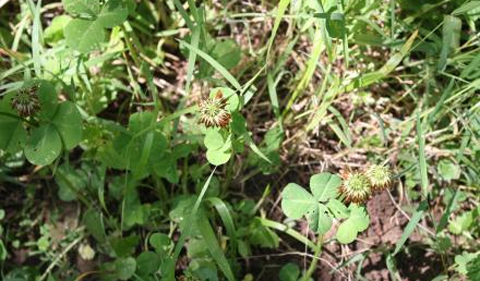
Running Buffalo Clover in Ironton, Ohio
First, Running Buffalo Clover! Picture Ohio thousands of years ago before the millions of people created and populated Columbus, Cincinnati, Athens and other cities. Imagine herds of Buffalo grazing across Ohio, grey wolves hunting herds of elk while cougars hunt along the rivers. With all of this activity and disturbance, plants needed a way to adapt and thrive such a harsh-unforgiving environment. The Running Buffalo Clover was the expert: The more disturbance it had, the better it did.
Now that all these animals have been pushed out, the Running Buffalo Clover is diminishing at an alarming rate. With only a handful of populations left in Ohio, the Department of Natural Resources, Fish and Wildlife and the Department of Forestry are working hard to help manage the populations and, with a little luck, hopefully grow the populations.
You may be asking yourself, “Why is a wildlife biologist concerned and working with plants?” I would simply respond with, “Why shouldn’t I be concerned with plants?” Besides the fact plants are essential to our well being, plants play a vital role in the Circle of Life *cue Lion King music*. Plants feed insects and birds, insects and birds are eaten by small animals (birds also help re-pollinate the plant), small animals are eaten by larger animals, so on and so forth.
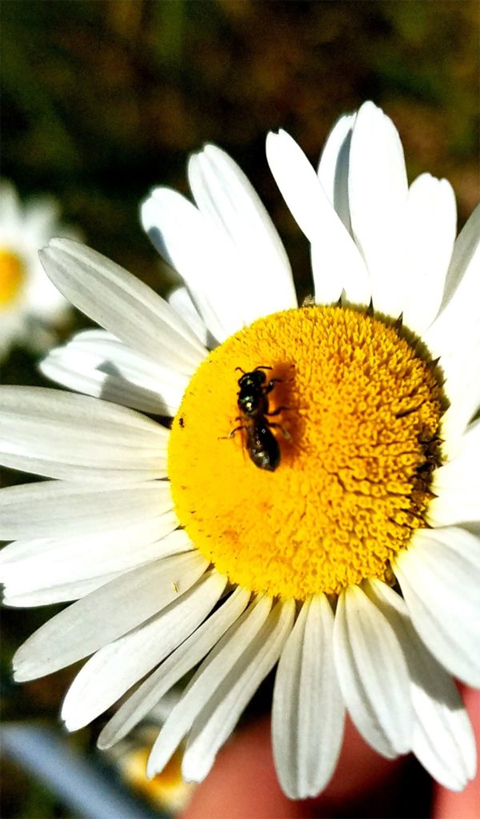
Small Carpenter Bee on an Oxide Daisey
Plants are also essential to pollinators, which as we all know, thanks to the news, is essential to our well being. We have started working on some pollinator surveys around Wayne, but that will be discussed in a later blog, so stay tuned!
Ready to learn about the most AMAZING thing I have done to date with the Wayne!?! Reintroducing the American Burying Beetle!!
Kyle Brooks (the other Wildlife Intern) and I had the pleasure of assisting Linda Andrews, the wildlife biologist for the Department of Forestry here in Ohio and the biologist who work at The Wilds, reintroduce 107 Breeding Pairs of American Burying Beetles and three lone females. When this opportunity arose, I figured I would only watch all the action, never handling the beetles and boy was I wrong.
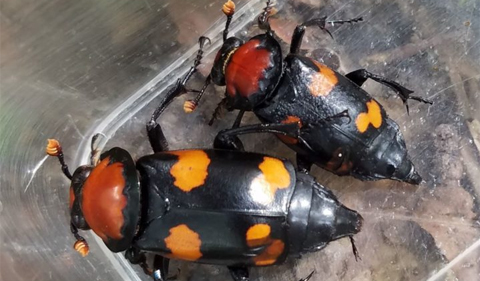
Breeding Pair of American Burying Beetles
Lets start by outlining what reintroducing these BEAUTIFUL beetles consists of. First, you have to find the most ideal spot for these guys, nothing too sunny but can’t be 100 percent covered by canopy; it has to be perfect. After their new home has been perfectly scouted and picked out, then the fun can begin.
There were about two dozen volunteers that were apart of the reintroduction, which was a feet all in itself! In all, 110 holes were then dug about 6-8 inches into the ground with small tunnels on either side; once the holes were dug, we then placed a rat inside the tunnel. The rat(s) serve as a food source for the larvae once they are born (if the breeding pairs were successful). Then the fun part starts, coordinating two dozen people who are all just as eager to handle these beautiful beetles, to get each pair into their own hole and buried.
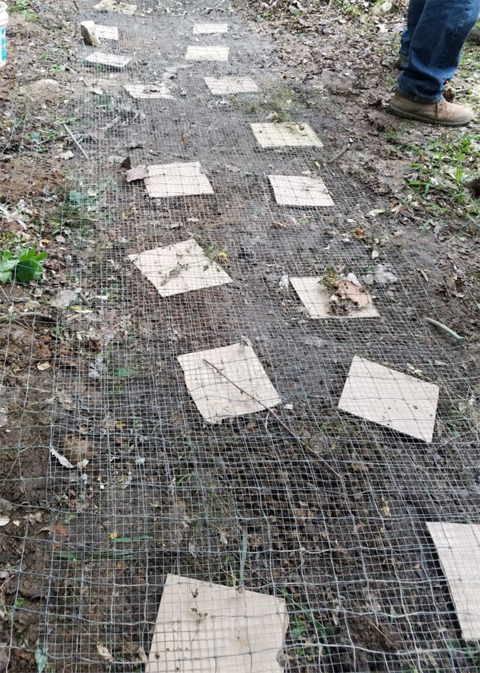
Approximately 28 completed burying beetle sites
Once all of the beetles were buried and everything got cleaned up, we went for lunch at the Lookout there at The Wilds, and holy cow, that view!!! It was just breathtaking. Probably one of the prettiest views I have experienced while eating a peanut butter and jelly sandwich. Then we had the most AMAZING tour of the grounds; I have never been so close to so many endangered and wild animals before!! I even got to pet a giraffe!! I mean, he did stick his head in the truck hoping I had some lettuce or something to feed him, but still!!! So much better than paying to feed giraffe at the Columbus Zoo.
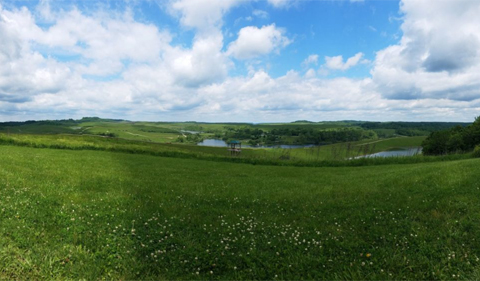
Our lunch time view at The Wilds.
Needless to say, I am still absolutely 100 percent in love with my job this summer, and to be completely honest, I don’t think I want it to end. Ever. We’re only about a month into this internship, and it has already been an amazing experience. I am sure over the course of the next two months, we will have even more exciting and interesting sightings and experiences to talk about, and I am looking forward to sharing them with everyone.
More about Ohio’s State Listed Species
If you would like to learn about Ohio’s State Listed Species, both threatened and endangered, here are a few links you can visit:
http://wildlife.ohiodnr.gov/species-and-habitats/state-listed-species
http://wildlife.ohiodnr.gov/portals/wildlife/pdfs/publications/information/pub356.pdf
http://wildlife.ohiodnr.gov/species-and-habitats/state-listed-species/state-listed-species-by-county



















2 Comments